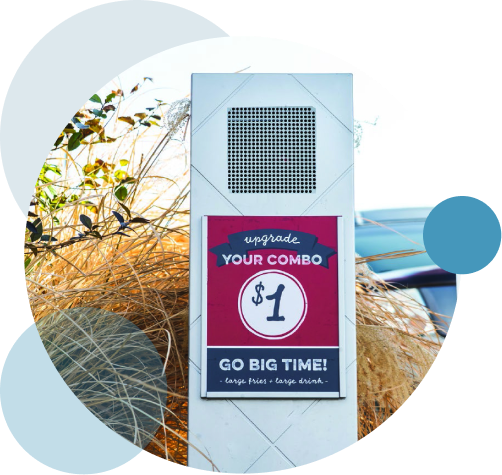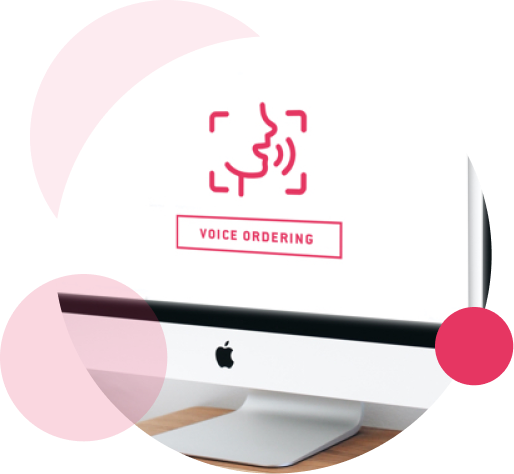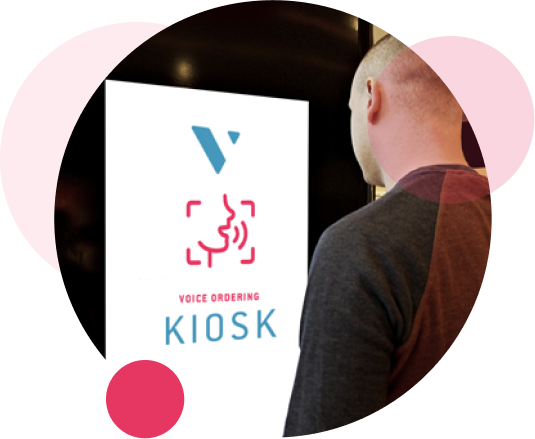
3.8.2022
Rob Carpenter is CEO and Founder of Valyant AI, which for the past five years has been working to develop the world’s best conversational AI platform for the quick serve restaurant (QSR) industry. Valyant AI’s proprietary conversational AI platform integrates existing mobile, web, call ahead, kiosk and drive thru platforms. This includes integrating with any required onsite hardware and on-premise or cloud POS systems. A passionate technologist and serial entrepreneur driven to bring new and exciting products to market, Rob has an MBA with a specialization in Enterprise Technology Management. He has spent two years on the board of a VC fund and was named one of the top 25 young professionals in Colorado and received the Colorado Trailblazer award. Here he shares and his views on various topics, from the role that AI systems can play in helping restaurants overcome labor shortage issues to what the future holds for restaurant technology, in general, and where the industry is moving with the advent of other next-generation technologies, including self-driving cars and drones for food delivery.
The pandemic has created a brutal environment for restaurants, especially independent operators. What factors in your view are influencing how well quick-service restaurants have been able to adapt and survive during COVID?
During the pandemic, delivery and takeout options reached critical importance as consumers sought to minimize their contact with individuals from outside of their “pandemic pods.” Challenges related to the industry-spanning labor shortage and the “Great Resignation” are also affecting QSRs. The industry moved from being short 800,000 employees before the pandemic to lacking people to fill up to 1.7 million open positions today. Between increased demand and the industry-wide labor shortage, it has become difficult for QSR operators to maintain and staff their restaurants right now.
industry-spanning labor shortage and the “Great Resignation” are also affecting QSRs. The industry moved from being short 800,000 employees before the pandemic to lacking people to fill up to 1.7 million open positions today. Between increased demand and the industry-wide labor shortage, it has become difficult for QSR operators to maintain and staff their restaurants right now.
Combined, these two concerns became a critical driver for restauranteurs turning to AI systems to help keep their restaurants running. For instance, if two of three staff members don’t show up for work, a restaurant may have to close its doors, but with Valyant’s conversational AI platform, an entire restaurant can operate with just one employee preparing orders and taking payments.
What inspired you to start Valyant AI?
I am a bit of a nerd at heart. I love new and cutting-edge tech. The initial idea for Valyant was to build holographic digital employees — virtual workers with limitless applications.
At the time, conversational AI was still in its infancy and wasn’t really capable of delivering the type of experience we wanted to see with our holographic employees. As a result, I decided to pivot the company into conversational AI technology to build the systems I felt were needed to ultimately deliver on my long-term goals of digital employees. We will circle back to the original idea once we believe the conversational AI has achieved the level of capability, experience and fluid interaction we expect from employees. Once we do that, there are literally limitless applications for the technology, and we expect to be on the forefront of this new industry.
Valyant’s AI tech provides both online and on-premise solutions to QSR. What are the benefits?
The main benefits of Valyant’s tech are the gaps that are being filled with labor and staffing shortages. Our unique platform integrates with existing drive-thru hardware and on-premise or cloud point of sale systems, freeing human employees to spend more time focused on customers, which streamlines the customer experience, improves employee efficiency and helps address labor shortages, especially during peak times. The AI has the ability to fill in the gaps when workers don’t show up or if a location is experiencing high turnover. The platform also eases operations and increases efficiency and speed of service. Valyant’s conversational AI platform has a 97 percent average order automation rate. We usually see average ticket size increases by 15 to 20 percent, which is solely driven by AI-powered suggestions in upsizing, adding desserts, etc.
The additional benefits we see with conversational AI technology include mitigating theft by handling the order process from start to finish. Plus, AI can help deliver consistent customer service experiences regardless of staffing levels and management consistency because the AI never fails to show up for a shift, leaves mid-shift or requires constant training due to the turnover. Ultimately, these types of systems provide a more streamlined experience for everyone involved.
Why do you think the QSR industry has been hesitant or slower to adopt new technologies?
This is an industry that has not always been tech-driven — it has been motivated by customer service, the customer experience and delivering high-quality food. From my perspective, I believe the restaurant industry has been among the last to adopt new technology, like mobile apps, kiosks and social communication channels. However, as more companies like McDonald’s and Yum! Brands hire tech-focused leaders and begin investing in new restaurant technology initiatives (while continuing to provide great services and products), we will start to see the restaurant industry shift from laggards to early adopters, helping to push new technologies forward. Due to the pandemic, and more technology-focused leadership, we are seeing a general trend where the restaurant industry is moving from being a late adopter of technology to an early adopter. Conversational AI is one area, but additional applications include self-driving cars and drones for food delivery.
What in your view does the future hold for restaurant technology?
We always want to keep the customer front and center. New technologies like self-driving cars and drones can help with the issues related to last-mile delivery. Conversational AI can help with staffing shortages, providing consistent guest experiences and revenue increases for the small-business owners who own and run most restaurants. Additional areas include the movement toward sourcing healthier ingredients, providing products like Beyond Meat and Impossible burgers that are not as taxing on agriculture as traditional livestock, and getting rid of single-use plastics and other items that ultimately end up in trash bins and can hurt our environment over the long term. Lastly, I would love to see conversational AI that has the ability to speak and understand all languages and understand people from all backgrounds and geographies. The future is an exciting place and quick-serve restaurants are currently investing a significant amount of time and effort to advance beneficial new technologies into the market.

